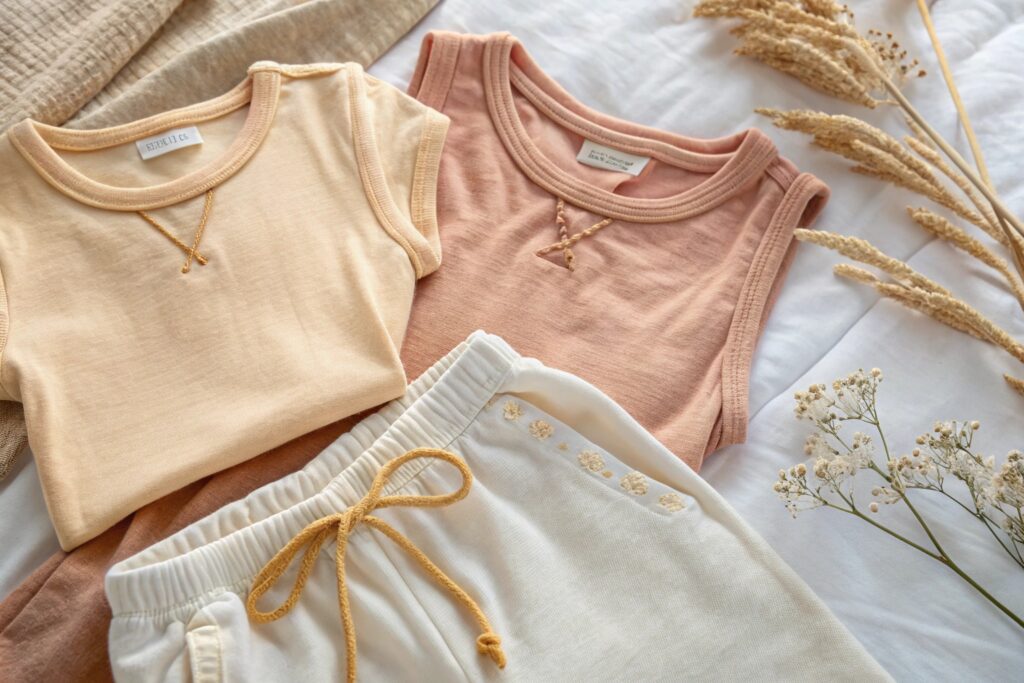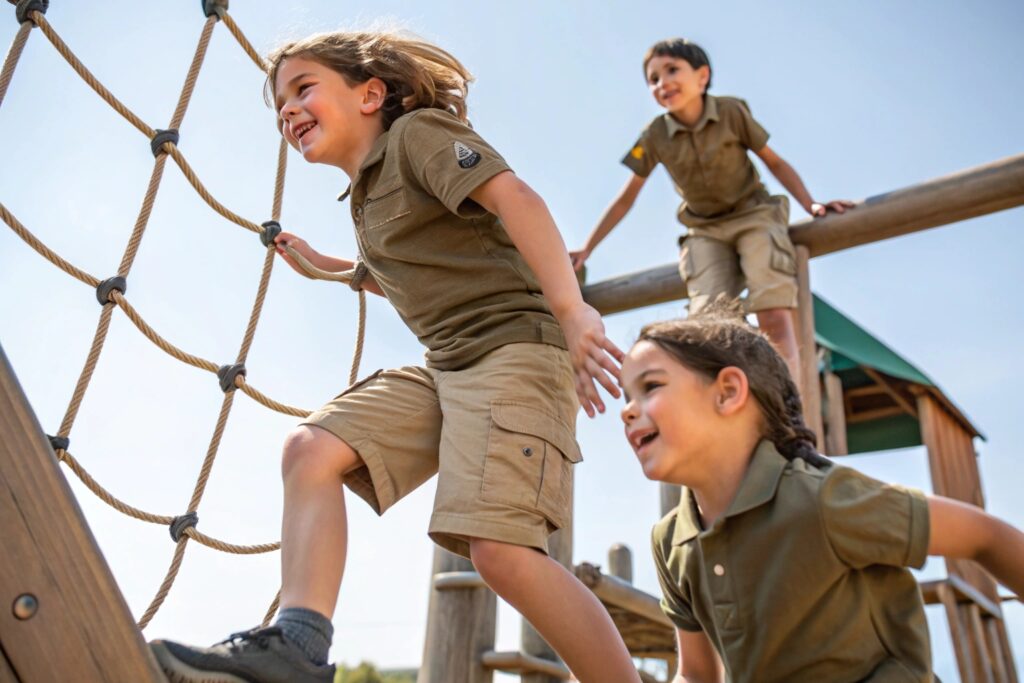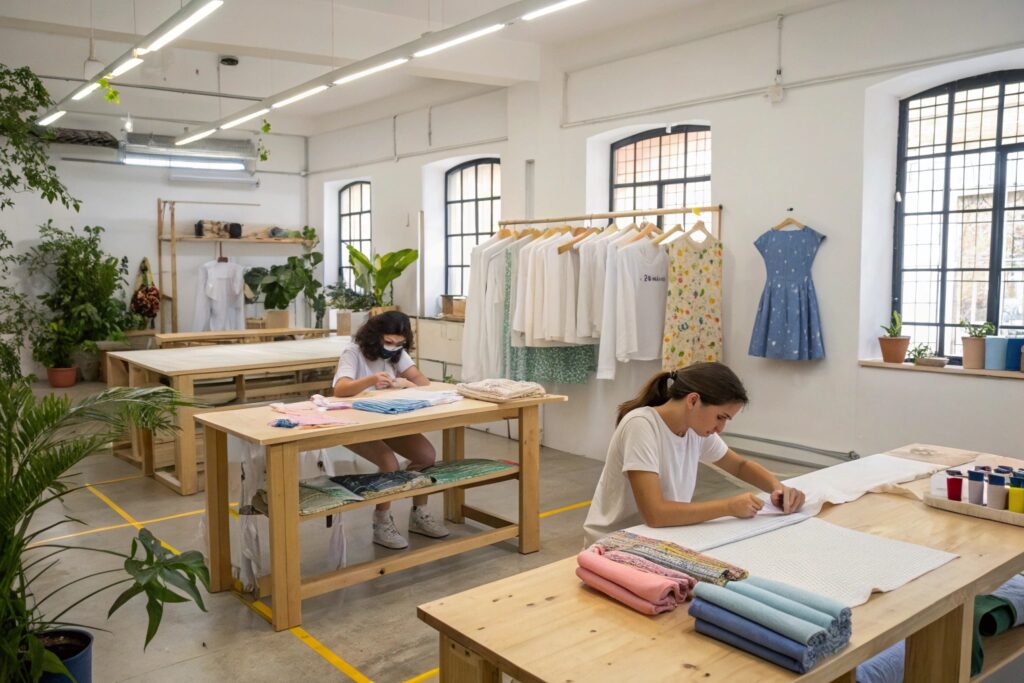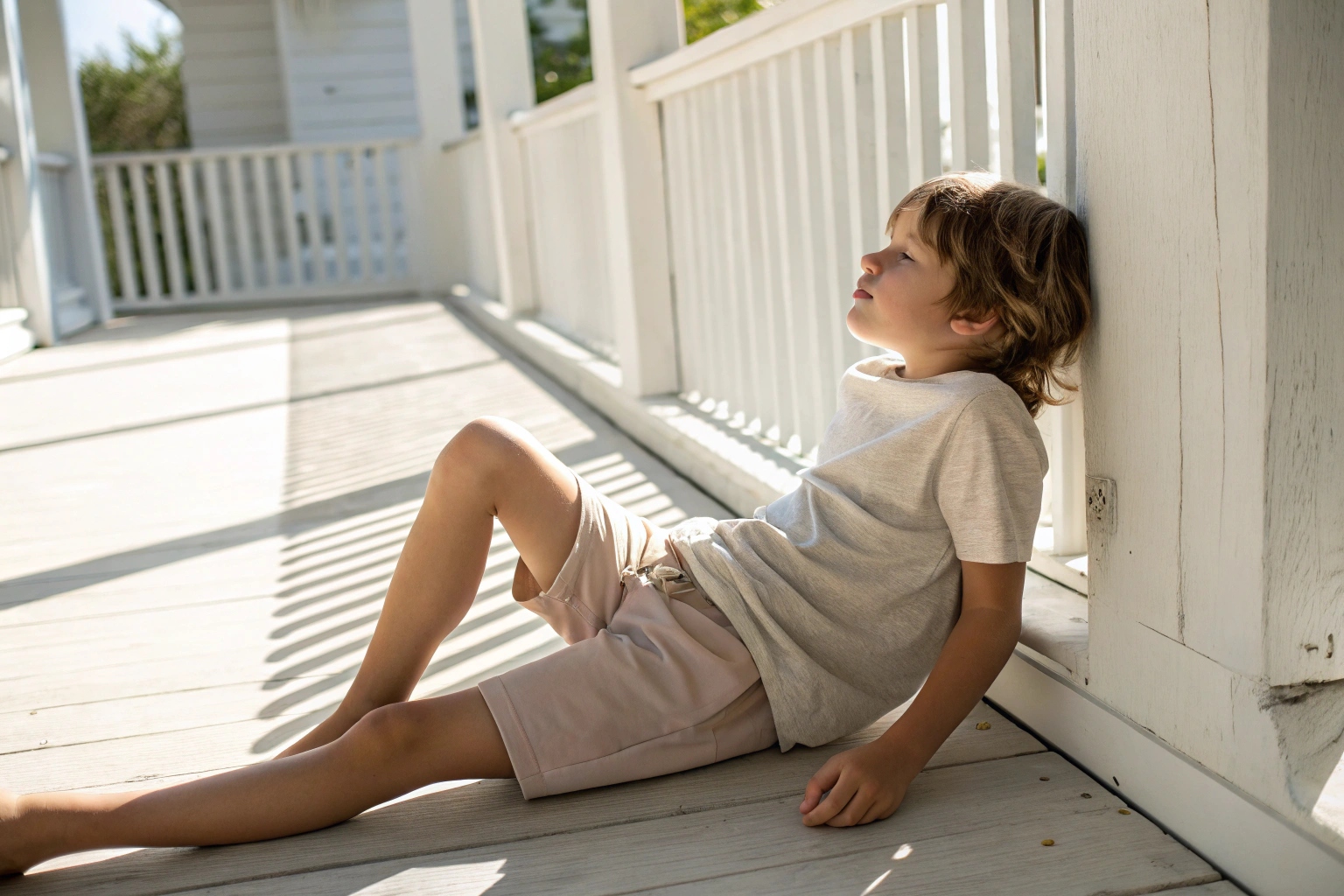Overflowing closets don’t make kids more comfortable—just overwhelmed, and often underdressed for what they really need.
Fewer, better kidswear pieces matter because they improve comfort, reduce decision stress, encourage responsibility, and lower environmental impact without sacrificing style.
As a clothing manufacturer, I’ve worked with brands that flood the market with volume. But I’ve also seen how strategic, quality-first designs outperform bulk in both satisfaction and long-term wearability.
How Quality Over Quantity Supports Child Comfort
Quantity might offer options—but comfort depends on thoughtful construction and premium materials.
High-quality kidswear improves comfort through better fabric feel, tailored fit, and intentional design, ensuring children enjoy wearing what they own more often and for longer.

Why do children wear their favorite pieces more often than anything else in their wardrobe?
Any parent knows this: kids choose the same sweatshirt again and again—not because of how it looks, but because of how it feels. The tags don’t scratch, the seams don’t dig, the sleeves feel just right.
At Fumao Clothing, we engineer every piece with this in mind. We use tagless labels, flatlock stitching, and stretch-friendly cuts that allow movement without pinching. Our U.S. clients in the kidswear market consistently report fewer returns and higher repurchase rates when comfort takes priority.
A wardrobe of 30 uncomfortable shirts isn’t better than 5 they love and wear every week.
How does quality-focused kidswear reduce wardrobe clutter and daily stress?
More clothes = more laundry, more mess, more “what do I wear” chaos. When each piece is intentionally selected and designed to feel good, parents and children simplify mornings.
A minimal wardrobe built from high-quality basics—soft tees, flexible bottoms, cozy outerwear—reduces time spent arguing over clothes. One of our clients built a 12-piece capsule for toddlers, and their customers kept asking for duplicates—not variety, but backups.
Comfort isn’t just about the body. It’s about emotional ease. Fewer, better pieces make mornings smoother.
The Impact of Minimalist Fashion on Kids’ Development
Kids need freedom to explore—not be weighed down by outfits that distract or restrict.
Minimalist kidswear helps children focus on play, expression, and independence by reducing clutter and sensory overload caused by unnecessary clothing options.

How does fewer clothing choices help children become more independent dressers?
Too many choices can overwhelm kids. Simpler wardrobes make decision-making easier and build confidence. If everything matches, they can dress themselves—and feel good doing it.
We worked with a Montessori-inspired brand that wanted kids to independently choose outfits from age 3. We helped design their line with matching color stories, soft elastic features, and easy fasteners. Parents loved that their toddlers could dress without help—and kids felt proud.
Independence in dressing is a developmental milestone. Quality minimalist fashion supports it naturally.
Why does minimal clothing help reduce sensory issues and overstimulation?
Children, especially those with sensory sensitivities, struggle with scratchy fabrics, bumpy seams, or clothes that tug in the wrong places. A minimal wardrobe built with comfort-first design prevents daily discomfort.
At Fumao Clothing, we’ve created lines specifically for neurodiverse kids—clothes with hidden seams, calming textures, and tag-free interiors. These are worn more often, for longer, and with fewer meltdowns.
Minimalism isn’t about having less. It’s about having what works—consistently.
Best Durable Fabrics for Long-Lasting Kidswear
Durability isn’t optional when clothes face playgrounds, sandpits, and 100+ washes.
The best kidswear fabrics resist pilling, shrinking, color fade, and tearing—ensuring fewer replacements, less waste, and more reliable daily use.

What fabric types hold up best to repeated wear, play, and industrial laundry?
We’ve tested dozens of materials in our facility to simulate child use. The most resilient combinations often surprise our clients.
Here’s our list of go-to fabrics:
| Fabric Type | Benefits | Recommended Use Cases |
|---|---|---|
| Cotton-Spandex Blend | Soft with good stretch recovery | Tees, leggings, bodysuits |
| Brushed Cotton Jersey | Warm, pill-resistant, and breathable | Pajamas, lounge sets |
| Twill Cotton/Poly Blend | Stain-resistant, durable for outdoor wear | Pants, overalls |
| Tencel Modal Mix | Luxuriously soft, sustainable, drapes well | Dresses, layering pieces |
| Interlock Knit | Dense yet flexible, holds shape | Babywear, casual sets |
Our clients who build long-wear capsules using these materials see lower return rates and higher resale value. One U.S. boutique we supply tracks garment use and has pieces still circulating after 4 hand-me-down cycles.
How does fabric quality affect sustainability and cost over time?
High upfront quality leads to lower long-term cost. Cheap fabrics tear, fade, and stretch out—forcing parents to rebuy. Quality ones stay in rotation, get passed on, or resold.
For brands, this means better customer satisfaction and stronger brand reputation. At Fumao Clothing, we encourage clients to run “30-wash test” before committing to a material. If a fabric still feels good and looks sharp after that, it’s a keeper.
Durable fabrics = happier parents = lower waste = stronger margins.
Why Ethical Kids Clothing Is Worth the Investment
Ethical isn’t just about the planet—it’s about people, too.
Ethical kidswear supports fair labor, safe materials, and transparent sourcing—all while delivering quality and durability that justifies the higher price tag.

Why do conscious parents choose ethical clothing over fast fashion—even at a higher price?
Parents today care deeply about what touches their child’s skin—and how that garment was made. Organic dyes, safe factories, no forced labor—these matter.
One of our Scandinavian partners shared that their top-selling set is priced 3x higher than fast fashion, but sells out every quarter. Why? Because their customers trust the story, not just the fabric.
We help brands label every stage—from fiber source to sewing floor—so buyers know what they’re supporting. That transparency builds long-term brand loyalty.
What practical features should ethical kidswear brands include to justify the price?
Ethics alone can’t carry a product. It has to perform. Here’s what we recommend building in:
- Adjustable sizing: Grows with child, reducing wardrobe turnover
- Double-stitched seams: Extends life of high-movement areas
- GOTS or OEKO-TEX certification: Ensures safety and ecological soundness
- Recyclable packaging: Reduces post-purchase waste
- Repair services or reuse incentives: Extend value beyond first use
We work with brands on DDP delivery and custom care labels to make ethical kidswear feel seamless and complete. When quality, comfort, and values align—parents don’t mind the investment.
Conclusion
Choosing fewer, better pieces isn’t just a style decision—it’s a movement. For kids, it means comfort and confidence. For parents, it means simplicity. For the planet, it means progress.










